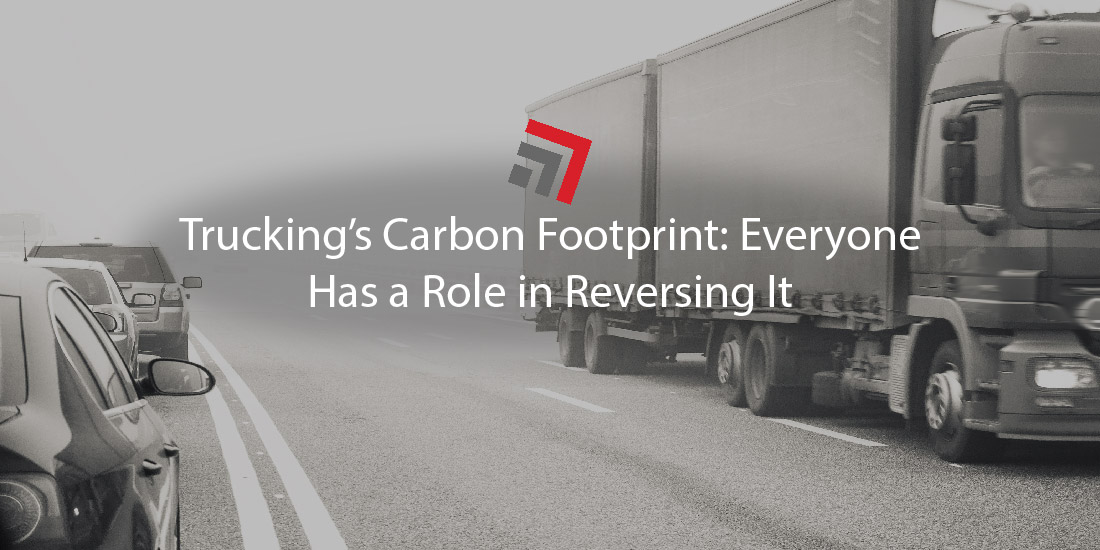Among many prideful designations, a certain title the trucking industry holds is not one to be particularly proud of.
Trucking remains the world’s largest producer of greenhouse gas (GHG) emissions and, according to Visual Capitalist, the industry is pinned as the fastest-growing contributor to GHGs worldwide.
To be fair, the industry is not oblivious to or callously ignoring its carbon footprint. There are continuing efforts to cut back on emissions. Whether that’s through investing in newer vehicle technology or optimizing pickup or delivery routes.
Despite a growing commitment from the trucking industry to adopt more sustainable operations, over the past couple of years increased freight activity has put more trucks on the road. With higher volumes of travel and road miles clocked, GHG emission levels remain trending upward.
The International Transport Forum forecasts that trucking’s stake to overall CO2 emissions will grow to 56 percent by 2050. For reference, this would be an increase from 53 percent in 2010. Additionally, the Environmental Protection Agency (EPA) projects by 2025, the shipment of U.S. goods will grow another 23.5 percent, and by 2040, a total of 25 percent.
EPA Advises All Companies to Play a Role in Reversing Trucking’s Carbon Footprint
The EPA calls on all companies, whether in the transportation sector or not, to evaluate their own operations and how they contribute to trucking’s carbon footprint.
From an announcement on its website, the EPA advises:
“The business community can reduce the risks we will face from air pollution and health effects caused by freight transportation. By measuring, benchmarking, and assessing freight transportation activities and strategically making better choices that reduce emission, companies can make a significant impact on the contribution of freight to cleaner air.”
Whether companies are involved on the production, distribution, or transportation side, the EPA is adamant that each sector must be mindful of their responsibility to curb emissions from transportation.
The Consumer’s Role in Driving Change
If government consul alone cannot spur initiative from businesses to adapt, perhaps the everyday consumer can.
Consumers, with the purchasing power they bolster, have a tremendous ability to drive change with how companies operate. A survey from the National Retail Federation found that of 19,000 consumers, 57 percent of them reported that they are willing to change their purchasing habits to help reduce negative environmental impacts.
Suffice to say, the results of the survey provide an indicator of consumer behavior for companies to reflect on. Companies with proactive approaches may garner considerable rewards for their efforts to mitigate contributions to transportation’s carbon footprint.
Final Thoughts
With more and more companies potentially switching to greener practices, the trucking industry must keep its momentum with its own sustainability efforts. After all, these companies, or shippers, are the trucking industry’s consumers. Like before, consumers carry purchasing power and behaviors that the industry must account for.
Please do not hesitate to contact one of our team members if you have any further questions on this topic or any others in domestic logistics.



Recent Comments